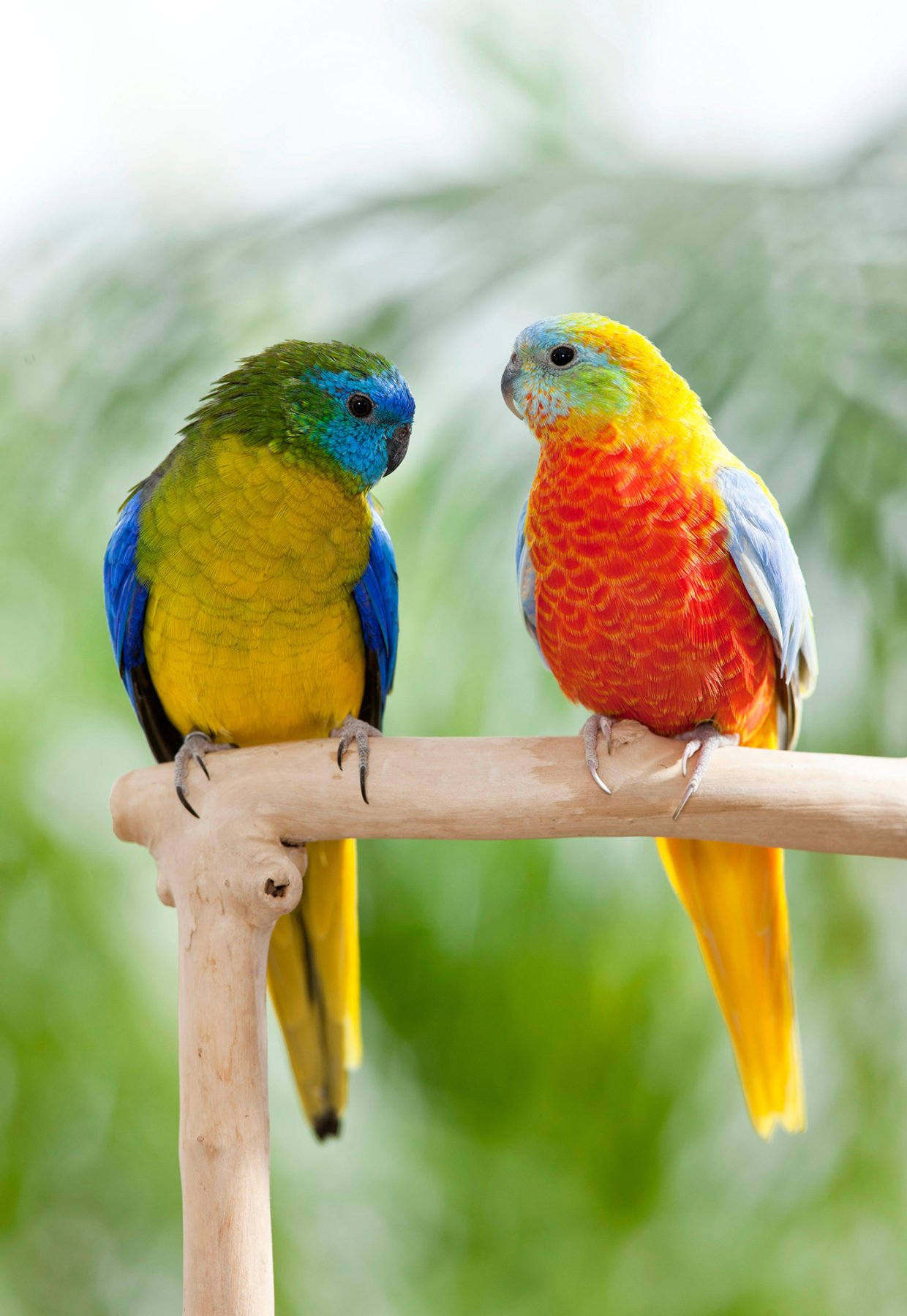The scarlet-chested parrot looks like a technicolour budgerigar

Bec Crew
Bec Crew

The scarlet-chested parrot (Neophema splendida) is one of Australia’s most beautiful (and arguably underrated) birds. It’s endemic to arid and semi-arid parts of central South Australia and inland southern Western Australia, particularly throughout the Great Victoria Desert.
Despite being such an attractive bird, it’s among our most poorly understood. What makes it so difficult for scientists to study this species is that it’s nomadic. Rather than there being established colonies, group of them will appear in certain areas, feed and socialise – and perhaps even breed if the conditions are particularly good – and then disappear without a trace, moving on to the next feeding spot.
At least it’s easy to tell the males and females apart. Scarlet-chested parrots are strongly sexually dimorphic – the males have those wonderful bright rainbow colours and the females boast a lovely combination of blues, greens and turquoise, as you can see here.
Scarlet-chested parrots belong to the Neophema genus of grass parrots – a group of six species known for their preference for feeding on grass seeds and fallen fruits.
Those bright rainbow colours are unique to scarlet-chested parrots; other species, such as turquoise parrots (Neophema pulchella) and rock parrots (Neophema petrophila), are predominantly decorated in blues and greens and yellows.
Sometimes odd colour combinations can arise from random mutations, which injects lovely smatterings of reds and oranges, like you can see here in this photo of a pair of turquoise parrots (Neophema pulchella), a species native to eastern Australia:

The most famous grass parrot is the orange-bellied parrot (Neophema chrysogaster), endemic to southern Australia and critically endangered. Like the scarlet-chested parrot, orange-bellied parrots are migratory, which makes them very difficult to monitor, prompting scientists to trial approaches such as engaging the public to help track them.
Perhaps the closest relative of the Neophema grass parrots is Bourke’s parrot (Neopsephotus bourkii), seen in the footage below:
It was formerly classified as Neophema bourkii, but in the ‘90s was placed into its own genusdue to a lack of evidence that they can interbreed with Neophema grass parrots.
These beautiful little birds look almost out of place in the wild, similar to how it’s almost jarring to see wild budgies because we’re so used to seeing them as pets. And while threats such as foxes and cats are a concern for Bourke’s parrots, population numbers in the wild have actually been increasing.

